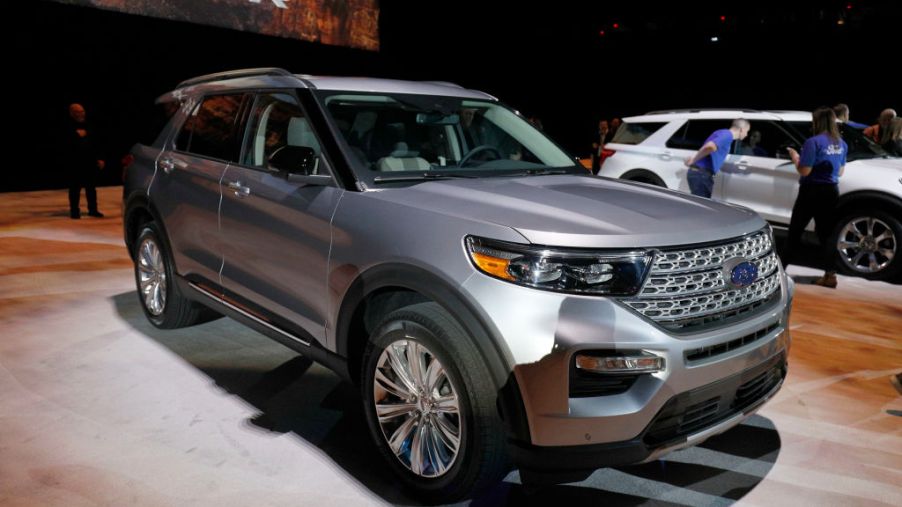
The Ford Explorer’s Third Row Is Its Only Advantage Over the Toyota Highlander
The Ford vs. Toyota rivalry has been around for decades and it seems to get more intense every year. As a long time industry leader, Ford Explorer is at the top of its respective mountain. But the Toyota Highlander keeps climbing higher and might push the Ford Explorer aside.
The 2020 Ford Explorer
The newly re-designed 2020 Ford Explorer ditched the time-honored cab-on-frame chassis to adopt a new unibody frame design similar to the Lincoln Navigator. The updated angular lines allow more head and shoulder room by increasing passenger volume capacity to 152.7 cubic feet, 1.2 cubic feet more than 2019. With a base MSRP of $32,765, the price jumps to $58,250 for the Platinum trim with still more options available.
Seating for seven people in a three-row configuration popular among SUV enthusiasts is common in the Ford Explorer, but the Limited and ST trim versions only seat 6 people. Some other notable standard features include a cabin air filtration system, tri-zone electronic temperature control, remote start, and a reverse sensing warning system.
The 2020 Ford Explorer offers three engine choices including one four-cylinder and two V6 offerings. The turbocharged 2.3-liter inline-four produces 300 hp and 310 lb-ft of torque. Next up the horsepower ladder is a 3.3-liter naturally aspirated V6 hybrid that makes 318 hp and 322 lb-ft of torque when combined with the electric drive at peak battery power.
Both of these engines can be paired with either rear-wheel- or four-wheel-drive systems. The most powerful option available at the ST and Platinum levels is a 3.0-liter twin-turbo V6. In the ST trim, this engine produces 400 hp and 415 lb-ft of torque. Platinum trim drops the power to 365 hp and torque to 380 lb-ft. All of these values on Ford’s website note that premium fuel was used to achieve these numbers and that individual results may vary.
The 2020 Toyota Highlander
The newly redesigned fourth-generation 2020 Toyota Highlander is the current segment sales leader as Ford sold 19,791 Explorers in the first quarter of 2020 while Toyota sold 47,890 Highlanders. Sleek lines and bold interior design are a welcome surprise when compared to the Explorer’s price tag. The 2020 Highlander has a base MSRP of $34,600 and climbs to $48,250 for the Hybrid Platinum configuration with a few additional options still available.
With seating for at least 7 people consistent through all Highlander models, some configurations will allow seating for 8 people. Similar to the Ford Explorer, the Highlander offers such standard features as three-zone climate control, cabin air filtration, and collision avoidance sensors.
The 2020 Toyota Highlander is available in your choice of two different engine configurations. First is a gasoline-powered 3.5-liter V6 capable of producing 295 hp and 263 lb-ft of torque. The other choice is a 2.5-liter four-cylinder hybrid system that combines power with an electric motor to provide 243 hp. The internal combustion engine alone is rated at 186 hp and 175 lb-ft of torque. A choice of front-wheel drive or all-wheel drive is available as well.
Pick of the litter
In MotorTrend’s comparison of the two contenders, the complaints they had about the Ford Explorer include the inadequacy of the four-cylinder engine, erratic, jerky brake pedal feedback, and utilitarian plastic interior. In their head-to-head test, the only advantage the Explorer XLT had over the Highlander XLE was the extra room in the third-row seat.
By contrast, the Toyota Highlander XLE has a superior fit and finish inside and out, a much better suspension, and a price tag over $5,000 cheaper than the comparable Ford Explorer XLT. While the testers had issues with the powertrain provided in both SUVs, they did point out that neither of these vehicles is designed to be racing in the desert.



